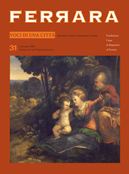The multifaceted figure of a leading light of Jewish Ferrara in the twentieth century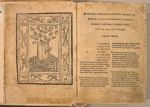
A Ferrara man, descendent of an old Jewish family. A confirmed anti-fascist leading to his internment in a camp for political dissidents. In the post-war period, following the Holocaust and the racial persecution that affected his entire family, defender of damaged Jewish dignity, and promoter of pacifist ideals inspired by resistance values. But at the same time, an ardent book-lover and creator of a peerless book collection. Additionally, a refined music enthusiast and indefatigable organiser of legendary musical events. Various interests, a multitude of activities, parallel existences. However the passion that inspired Renzo Bonfiglioli, guided him and gave sense to his life - or perhaps lives - was unique. He was a member of that affable and industrious Jewish Ferrara community that was brutally wiped out, and then restored to collective memory and consciousness by the poignant evocation of its leading poet, Giorgio Bassani. Actually, even more, if it is true that the story of the Bonfiglioli family intersects with the story of the Finzi-Contini family, and partly identifies with it, or its real equivalent. Renzo was the firstborn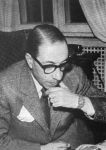 son of Giacomo Bonfiglioli (1864-1941) and Maria Sacerdoti (1874-1940) and was born in Ferrara on 17 March 1904. Having completed the Ariosto secondary school, he enrolled in the political science faculty in Florence. This was towards the beginning of a dark period in Italy, and he was enlightened by intellectuals like Gaetano Salvemini, Carlo and Nello Rosselli and others, who strengthened his antifascist ideals, drawing him out of his "taciturn, withdrawn" self (as he is described by Bruno Pincherle in Testimonianze su Renzo Bonfiglioli [memories of Renzo Bonfiglioli]. He remained a staunch antifascist for the rest of his life. After graduating with Piero Calamandrei and having taken a second degree in law, he would have liked to embark on a diplomatic career. This was soon made impossible for people like him who were both Jewish and government opponents. However, since he was well-off and owned property, he would have been able to enjoy a comfortable, care-free life, without having to rely on stable employment. In fact the administration of his properties gave him the time to devote to his dearest interests and to travel a lot - and at this point we should change location to introduce another important character to the story. It was while taking a trip to London in the summer of 1926, or possibly 1927-1928, that an Italian acquaintance of his told him that there was a young lady from a good family in the area, another Jew from Ferrara. Upon learning this, Renzo, dressed impeccably with that sharp sense of style that marked him out, went to visit the town of Aldershot in Surrey, southwest of London. The girl was the guest of an English family and was there to learn English. This would definitely
son of Giacomo Bonfiglioli (1864-1941) and Maria Sacerdoti (1874-1940) and was born in Ferrara on 17 March 1904. Having completed the Ariosto secondary school, he enrolled in the political science faculty in Florence. This was towards the beginning of a dark period in Italy, and he was enlightened by intellectuals like Gaetano Salvemini, Carlo and Nello Rosselli and others, who strengthened his antifascist ideals, drawing him out of his "taciturn, withdrawn" self (as he is described by Bruno Pincherle in Testimonianze su Renzo Bonfiglioli [memories of Renzo Bonfiglioli]. He remained a staunch antifascist for the rest of his life. After graduating with Piero Calamandrei and having taken a second degree in law, he would have liked to embark on a diplomatic career. This was soon made impossible for people like him who were both Jewish and government opponents. However, since he was well-off and owned property, he would have been able to enjoy a comfortable, care-free life, without having to rely on stable employment. In fact the administration of his properties gave him the time to devote to his dearest interests and to travel a lot - and at this point we should change location to introduce another important character to the story. It was while taking a trip to London in the summer of 1926, or possibly 1927-1928, that an Italian acquaintance of his told him that there was a young lady from a good family in the area, another Jew from Ferrara. Upon learning this, Renzo, dressed impeccably with that sharp sense of style that marked him out, went to visit the town of Aldershot in Surrey, southwest of London. The girl was the guest of an English family and was there to learn English. This would definitely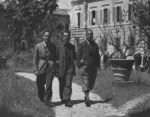 have been unusual for Italian girls at the time, but not for Jewish families according to Ida who is now an old lady. In fact it would have been encouraged. At the time she was just a little over 20, slim, with dark hair and an open, penetrating gaze. She had also developed an enthusiasm for tennis while she was in England, and in fact it was a very popular sport in her family. And so, after having taken her to various fashionable places, Renzo decided to take her to see some tennis at Wimbledon. Ida was impressed, and even though it didn't seem that he was, at least not immediately, she managed to instil some enthusiasm in him, albeit of the sporting type. In any case it was something they had in common, but soon they had much more than tennis in common once they returned to Ferrara. They got married there in 1930, followed by a honeymoon in the Hague in Holland. At the time, their life was very happy. Ida Ascoli Magrini was born in Graz in Austria on 31 December 1906. Her father, Giulio Ascoli, was a Jewish doctor who often had to move due to his job. He died very young, and is still remembered today for having established a professional nursing school in Trieste in 1910. The nursing school still bears his name. Her mother Isa Magrini, was born in Ferrara on 3 December 1876, and was deported to
have been unusual for Italian girls at the time, but not for Jewish families according to Ida who is now an old lady. In fact it would have been encouraged. At the time she was just a little over 20, slim, with dark hair and an open, penetrating gaze. She had also developed an enthusiasm for tennis while she was in England, and in fact it was a very popular sport in her family. And so, after having taken her to various fashionable places, Renzo decided to take her to see some tennis at Wimbledon. Ida was impressed, and even though it didn't seem that he was, at least not immediately, she managed to instil some enthusiasm in him, albeit of the sporting type. In any case it was something they had in common, but soon they had much more than tennis in common once they returned to Ferrara. They got married there in 1930, followed by a honeymoon in the Hague in Holland. At the time, their life was very happy. Ida Ascoli Magrini was born in Graz in Austria on 31 December 1906. Her father, Giulio Ascoli, was a Jewish doctor who often had to move due to his job. He died very young, and is still remembered today for having established a professional nursing school in Trieste in 1910. The nursing school still bears his name. Her mother Isa Magrini, was born in Ferrara on 3 December 1876, and was deported to Germany along with her brother, Silvio Magrini and his wife Albertina Bassani. Arrested in 1943, the couple was interned in the Fossoli camp, and from there deported to Buchenwald. On the other hand, Isa, the sister of Silvio, was stopped at Cannobio as she prepared to cross the border to Switzerland on 8 March 1944. After she too had passed through Fossoli, she was transported to Auschwitz where she was killed upon her arrival on 4 April 1944. The parents of Silvio and Isa were called Mosè and Fausta Artom, names which speak for themselves in recalling their association with Il giardino dei Finzi-Contini [The garden of the Finzi-Continis] by Bassani, where they actually appear as themselves. Or rather, it was Silvio Finzi-Magrini's family that the unforgettable figures of the Finzi-Continis were based on. In an interview given to the Resto del Carlino newspaper just before he died, Giorgio Bassani let out a secret that he had kept for years "I was inspired by the family of my former Professor Magrini". Silvio Magrini can consider himself to be the inspiration behind the character in Bassani's book. He was just as fascinating in real life as his fictional representation, Professor Ermanno. After graduating in mathematical, physical and natural sciences in Bologna in 1905, he became a qualified university teacher of experimental physics there, but was removed following implementation of the racial laws on 5 September 1938. Since his university career was stymied, he spent the last five years of his life, unaware of his fate, with his wife Albertina (Olga in the story) in his Ferrara home in number 76, Via Borgo dei Leoni, where he looked out onto the garden every so often
Germany along with her brother, Silvio Magrini and his wife Albertina Bassani. Arrested in 1943, the couple was interned in the Fossoli camp, and from there deported to Buchenwald. On the other hand, Isa, the sister of Silvio, was stopped at Cannobio as she prepared to cross the border to Switzerland on 8 March 1944. After she too had passed through Fossoli, she was transported to Auschwitz where she was killed upon her arrival on 4 April 1944. The parents of Silvio and Isa were called Mosè and Fausta Artom, names which speak for themselves in recalling their association with Il giardino dei Finzi-Contini [The garden of the Finzi-Continis] by Bassani, where they actually appear as themselves. Or rather, it was Silvio Finzi-Magrini's family that the unforgettable figures of the Finzi-Continis were based on. In an interview given to the Resto del Carlino newspaper just before he died, Giorgio Bassani let out a secret that he had kept for years "I was inspired by the family of my former Professor Magrini". Silvio Magrini can consider himself to be the inspiration behind the character in Bassani's book. He was just as fascinating in real life as his fictional representation, Professor Ermanno. After graduating in mathematical, physical and natural sciences in Bologna in 1905, he became a qualified university teacher of experimental physics there, but was removed following implementation of the racial laws on 5 September 1938. Since his university career was stymied, he spent the last five years of his life, unaware of his fate, with his wife Albertina (Olga in the story) in his Ferrara home in number 76, Via Borgo dei Leoni, where he looked out onto the garden every so often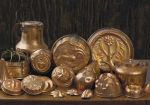 after having spent long hours at the library. In addition to the garden, Magrini's house also had its own tennis court (one of the oldest in Ferrara). This was the tennis court that Bassani played on following the racial bans in that fateful September 1938, as he could no longer play at the Marfisa Tennis Club (the "Eleonora d'Este Tennis Club" in the book ). But let's get back to the Bonfiglioli couple. They had a daughter Dori in 1931 and a son Geri (registered as Gerio) in 1935. Since the apartment they had been living in near the castle began to feel tight, Renzo bought a building in Via Palestro 70, parallel to Via Borgo dei Leoni, and the family moved there in 1937. This would be the Bonfigliolis' "magna domus": a 16th century building with an impressive staircase leading up to the entrance hall with coffered ceilings and polychromatic decorations. They slowly furnished it with period furniture, including unique, exquisitely-made pieces. However, even though this house could have been a museum, it was actually full of life and was always very lively, with the dogs and children running around everywhere. But the storm was fast approaching. In 1938, little Dori was not allowed to go to the state school, and Geri couldn't either when his turn came. And that was only the beginning. The racial persecution was followed by political persecution. Renzo Bonfiglioli's antifascist stance, his long militancy in the ranks of the democratic left, and his refusal to become a member of the P.N.F. did not go unnoticed by the state police who had already noted him as a "Jewish antifascist to be interned in the case of war". On the evening of 11 June 1940, two agents from the political squad of the Ferrara police headquarters knocked on the door. He went to answer. He listened to the reasons behind his arrest and as he left he said "I'll be back soon" to his wife. In actual fact Renzo Bonfiglioli wouldn't go back home for another 14 months, spending the interim period in the Urbisaglia concentration camp in the Fiastra Abbey in the province of Macerata. In actual fact the place was more sanatorium than concentration camp: a villa surrounded by a large fenced off park where they could walk freely. The cooking was acceptable, they could be visited by
after having spent long hours at the library. In addition to the garden, Magrini's house also had its own tennis court (one of the oldest in Ferrara). This was the tennis court that Bassani played on following the racial bans in that fateful September 1938, as he could no longer play at the Marfisa Tennis Club (the "Eleonora d'Este Tennis Club" in the book ). But let's get back to the Bonfiglioli couple. They had a daughter Dori in 1931 and a son Geri (registered as Gerio) in 1935. Since the apartment they had been living in near the castle began to feel tight, Renzo bought a building in Via Palestro 70, parallel to Via Borgo dei Leoni, and the family moved there in 1937. This would be the Bonfigliolis' "magna domus": a 16th century building with an impressive staircase leading up to the entrance hall with coffered ceilings and polychromatic decorations. They slowly furnished it with period furniture, including unique, exquisitely-made pieces. However, even though this house could have been a museum, it was actually full of life and was always very lively, with the dogs and children running around everywhere. But the storm was fast approaching. In 1938, little Dori was not allowed to go to the state school, and Geri couldn't either when his turn came. And that was only the beginning. The racial persecution was followed by political persecution. Renzo Bonfiglioli's antifascist stance, his long militancy in the ranks of the democratic left, and his refusal to become a member of the P.N.F. did not go unnoticed by the state police who had already noted him as a "Jewish antifascist to be interned in the case of war". On the evening of 11 June 1940, two agents from the political squad of the Ferrara police headquarters knocked on the door. He went to answer. He listened to the reasons behind his arrest and as he left he said "I'll be back soon" to his wife. In actual fact Renzo Bonfiglioli wouldn't go back home for another 14 months, spending the interim period in the Urbisaglia concentration camp in the Fiastra Abbey in the province of Macerata. In actual fact the place was more sanatorium than concentration camp: a villa surrounded by a large fenced off park where they could walk freely. The cooking was acceptable, they could be visited by relations and could even get out for a while, but only if strictly necessary and under supervision. Renzo met a friend from his university days here, a doctor from Trieste called Bruno Pincherle who was a fellow Jewish antifascist. Pincherle had a great interest: he was a bibliophile and collected rare editions. Since surveillance was limited and inefficient in this place of imprisonment, he was even able to have sales catalogues sent to him by various antique book dealers. His friend was intrigued by this. After having started with works on Ferrara history, Renzo immediately discovered what would become his overriding interest as a collector: Ariostean works. Over time his collection extended to include other sectors such as original editions of Italian nineteenth century books, still not very much requested even though rare. Renzo pursued this with a passion that only another collector could understand. He filled entire iron boxes with these volumes, hidden (not without risk) in the attic of where he was staying. But in the end he got sick and had to be transferred to hospital in Bologna. His wife Ida had to go and collect those precious volumes. In the Spring of 1944, there was a fatal closing of the circle around the Jews. The only option left to Renzo Bonfiglioli was to escape to Switzerland with his entire family, well aware of the dangers involved in that trip that had cost Ida's mother and many others so dearly. Once in Switzerland, Renzo settled in Geneva, and stayed there until July
relations and could even get out for a while, but only if strictly necessary and under supervision. Renzo met a friend from his university days here, a doctor from Trieste called Bruno Pincherle who was a fellow Jewish antifascist. Pincherle had a great interest: he was a bibliophile and collected rare editions. Since surveillance was limited and inefficient in this place of imprisonment, he was even able to have sales catalogues sent to him by various antique book dealers. His friend was intrigued by this. After having started with works on Ferrara history, Renzo immediately discovered what would become his overriding interest as a collector: Ariostean works. Over time his collection extended to include other sectors such as original editions of Italian nineteenth century books, still not very much requested even though rare. Renzo pursued this with a passion that only another collector could understand. He filled entire iron boxes with these volumes, hidden (not without risk) in the attic of where he was staying. But in the end he got sick and had to be transferred to hospital in Bologna. His wife Ida had to go and collect those precious volumes. In the Spring of 1944, there was a fatal closing of the circle around the Jews. The only option left to Renzo Bonfiglioli was to escape to Switzerland with his entire family, well aware of the dangers involved in that trip that had cost Ida's mother and many others so dearly. Once in Switzerland, Renzo settled in Geneva, and stayed there until July 1945. He led a cultured life, as was his wont, and met up with other antifascists and intellectuals who had also sought refuge there. Once the war was over, the Bonfigliolis returned to Ferrara and found their house plundered and half destroyed, with their beautiful furniture stolen. However, Renzo didn't get discouraged, and in fact took advantage of the situation to replace the missing pieces with even more refined furniture. He was always on the lookout for beautiful items and started new collections. But this was just the private side of the man who, by now, was considered to be the spokesperson of persecuted people, even at a national level. The C.L.N. charged him with reorganising the scattered communities and soon he became advisor and chairman of the Union of Israeli-Italian Communities, and then deputy chairman and chairman of the Zionist Italian Federation between 1963 and the last day of his life. One of his great interests was music, and he contributed much to the local music scene. Even though the musical institutions were still paralysed and the physical structures damaged by bombing in the initial post-war period, Bonfiglioli, at the head of a group of Ferrara people,
1945. He led a cultured life, as was his wont, and met up with other antifascists and intellectuals who had also sought refuge there. Once the war was over, the Bonfigliolis returned to Ferrara and found their house plundered and half destroyed, with their beautiful furniture stolen. However, Renzo didn't get discouraged, and in fact took advantage of the situation to replace the missing pieces with even more refined furniture. He was always on the lookout for beautiful items and started new collections. But this was just the private side of the man who, by now, was considered to be the spokesperson of persecuted people, even at a national level. The C.L.N. charged him with reorganising the scattered communities and soon he became advisor and chairman of the Union of Israeli-Italian Communities, and then deputy chairman and chairman of the Zionist Italian Federation between 1963 and the last day of his life. One of his great interests was music, and he contributed much to the local music scene. Even though the musical institutions were still paralysed and the physical structures damaged by bombing in the initial post-war period, Bonfiglioli, at the head of a group of Ferrara people, including Doctor Giuseppe Minerbi, the lawyer Ireneo Farneti and the teacher Benedetto Ghiglia, founded the Ferrara Concert Society. It existed between 1946 and 1955 and re-established regular musical activity, promoting a series of concerts which were destined to be remembered as unforgettable. Of course Bonfiglioli did not neglect his great book-collecting interest in the post-war period either and he continued to pursue it with tenacity and insight, often in the company of his friend Pincherle who had become his teacher. To the extent that by the 1950s, the Bonfiglioli collection could already boast a first edition of Ariosto's 1516 edition of Orlando furioso [The frenzy of Orlando] (only 12 copies of which are known to exist), the very rare 1521 edition (only 4 of which exist) and two 1532 editions (25 of which exist). He was therefore the first, and to date the only collector that managed to obtain all three original editions of the Ariosto poem. And
including Doctor Giuseppe Minerbi, the lawyer Ireneo Farneti and the teacher Benedetto Ghiglia, founded the Ferrara Concert Society. It existed between 1946 and 1955 and re-established regular musical activity, promoting a series of concerts which were destined to be remembered as unforgettable. Of course Bonfiglioli did not neglect his great book-collecting interest in the post-war period either and he continued to pursue it with tenacity and insight, often in the company of his friend Pincherle who had become his teacher. To the extent that by the 1950s, the Bonfiglioli collection could already boast a first edition of Ariosto's 1516 edition of Orlando furioso [The frenzy of Orlando] (only 12 copies of which are known to exist), the very rare 1521 edition (only 4 of which exist) and two 1532 editions (25 of which exist). He was therefore the first, and to date the only collector that managed to obtain all three original editions of the Ariosto poem. And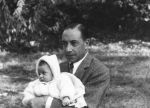 this was not all, since in addition to the extremely rare prints of Zoppino – 187 against the 14 of Ariosto - Bonfiglioli even owned a hand-written manuscript of an entire Dialogo [Dialogue] by Tasso, a first edition of the Poetica [Poetics] by Trissino annotated by Tasso, and a first edition of Teseide [Teseida] by Boccaccio printed in Ferrara in 1475. In addition, unlike many other collectors, Bonfiglioli did not hoard his collection; on the contrary, he made it available for use in public libraries. This was the case of the repatriation to Ferrara of the bible known as the Savonarola bible, or the Biblia latina [Latin bible] (Venice, Nicolaus Jenson, 1476) in 1960, heavily annotated by the Dominican monk during his trip to the monastery of Santa Maria degli Angeli in Ferrara between 1479 and 1482. He also obtained other Ariosto memorabilia in 1955 - the manuscript of Gerusalemme liberata [Jerusalem delivered] recopied by Orazio Ariosto, greatgrandson of the poet, and decorated with the splendid drawings of the Ferrara native, Domenico Mona. Renzo Bonfiglioli died in Ferrara after a long illness on 24 November 1963. He was 59. As fate would have it, the Bonfiglioli Library was sold by his heirs to a Milan-based antique dealer towards the end of the seventies, and
this was not all, since in addition to the extremely rare prints of Zoppino – 187 against the 14 of Ariosto - Bonfiglioli even owned a hand-written manuscript of an entire Dialogo [Dialogue] by Tasso, a first edition of the Poetica [Poetics] by Trissino annotated by Tasso, and a first edition of Teseide [Teseida] by Boccaccio printed in Ferrara in 1475. In addition, unlike many other collectors, Bonfiglioli did not hoard his collection; on the contrary, he made it available for use in public libraries. This was the case of the repatriation to Ferrara of the bible known as the Savonarola bible, or the Biblia latina [Latin bible] (Venice, Nicolaus Jenson, 1476) in 1960, heavily annotated by the Dominican monk during his trip to the monastery of Santa Maria degli Angeli in Ferrara between 1479 and 1482. He also obtained other Ariosto memorabilia in 1955 - the manuscript of Gerusalemme liberata [Jerusalem delivered] recopied by Orazio Ariosto, greatgrandson of the poet, and decorated with the splendid drawings of the Ferrara native, Domenico Mona. Renzo Bonfiglioli died in Ferrara after a long illness on 24 November 1963. He was 59. As fate would have it, the Bonfiglioli Library was sold by his heirs to a Milan-based antique dealer towards the end of the seventies, and then dispersed. The only thing that remains today is the memory and the regret at having lost it and that no Ferrara institution bought it. After a short while the "magna domus" was sold, renovated and turned into a luxury hotel. The woman who accompanied him throughout his life also accompanied him afterwards, spending the long evenings of her widowhood compiling a small catalogue of that renowned library. Today Ida Ascoli Magrini is 102. She will be 103 on 31 December next. The many travails of life have not even remotely affected her Ferrara-related, open, good-nature.
then dispersed. The only thing that remains today is the memory and the regret at having lost it and that no Ferrara institution bought it. After a short while the "magna domus" was sold, renovated and turned into a luxury hotel. The woman who accompanied him throughout his life also accompanied him afterwards, spending the long evenings of her widowhood compiling a small catalogue of that renowned library. Today Ida Ascoli Magrini is 102. She will be 103 on 31 December next. The many travails of life have not even remotely affected her Ferrara-related, open, good-nature.



